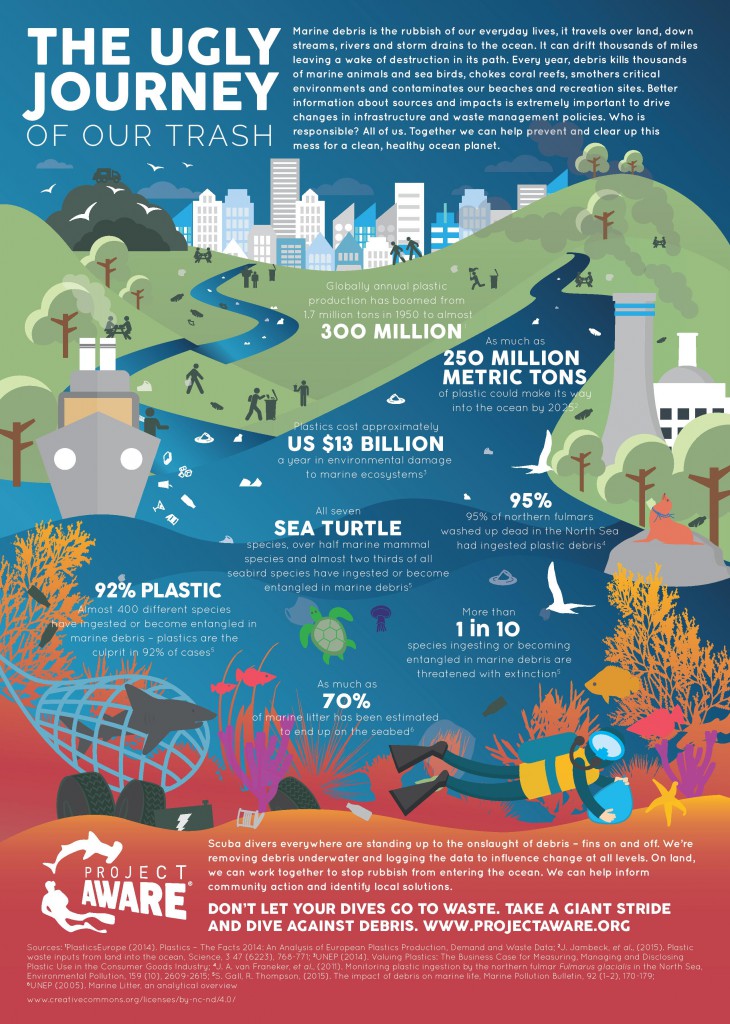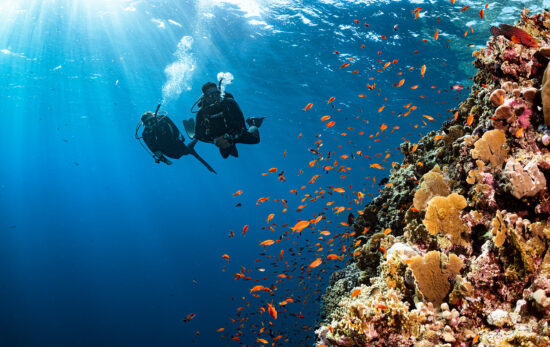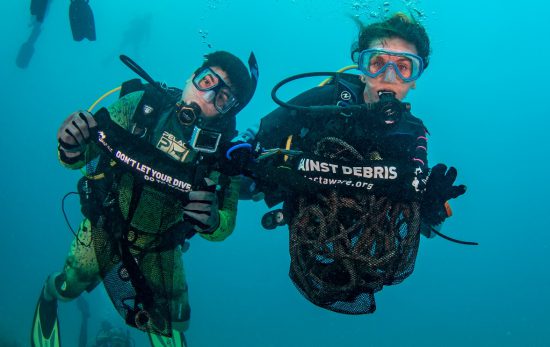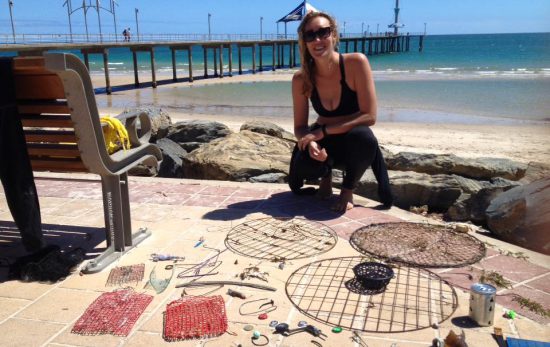How does our trash make its way from land to sea?
This infographic by Project AWARE explains the ugly journey, and shines light on the dangers our litter poses to marine ecosystems and wildlife along the way. While the marine debris issue may at first appear daunting, there is hope! With our underwater skill set, the dive community is uniquely positioned to contribute to global solutions by participating in Dive Against Debris, Project AWARE’s year-round underwater debris removal and reporting program.
We all want a healthy ocean and healthy planet – join Project AWARE in the fight against marine debris by becoming a Debris Activist!
Our ocean is under siege.
From everyday trash like plastic bags, food wrappers and drink bottles, to larger items like car batteries, kitchen appliances and fishing nets, our debris is entering the sea at an alarming rate. Our ocean has become a dumping ground.
Marine debris is not only unsightly, it’s dangerous to sea life, hazardous to human health, and costly to our economies. Marine animals can become entangled in debris or mistake small particles of trash for food – often with fatal results. Divers, swimmers and beachgoers can be directly harmed by encounters with debris or its toxins. And, the costs of plastic debris to marine ecosystems are estimated at 13 billion dollars a year. Better information about sources and impacts is extremely important to drive changes in infrastructure and waste management policies at all levels.
Who is responsible? All of us. Together we can help prevent and clear up this mess for a clean, healthy ocean planet.





